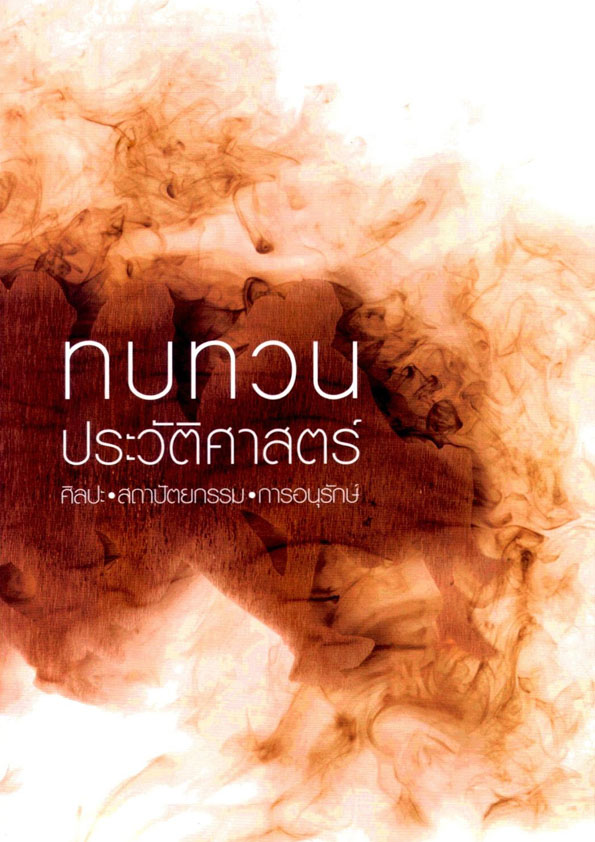บ้านพื้นถิ่นลาวเวียง...ที่บ้านเลือก Vernacular Houses of Lao Vieng at Ban Leug
Main Article Content
Abstract
บทคัดย่อ
ชาวลาวเวียงเป็นกลุ่มชนที่มีการย้ายถิ่นฐานจากเมืองเวียงจันทน์ สาธารณรัฐประชาธิปไตยประชาชนลาว และมาปลูกสร้างบ้านเรือนในประเทศไทยมานานกว่า 200 ปีมาแล้ว แต่การศึกษาลักษณะทางสถาปัตยกรรมของบ้านเรือนและชุมชนพื้นถิ่นของชาวลาวเวียงนั้นยังไม่มีปรากฏ บทความนี้มีวัตถุประสงค์เพื่อการนำเสนอลักษณะและการเปลี่ยนแปลงบ้านพื้นถิ่นของชาวลาวเวียง โดยมีกรณีศึกษา ณ ตำบลบ้านเลือก อำเภอโพธาราม จังหวัดราชบุรี ซึ่งเป็นพื้นที่ที่มีชาวลาวเวียงตั้งถิ่นฐานมาตั้งแต่สมัยกรุงธนบุรี และยังคงมีบ้านเรือนพื้นถิ่นอยู่อย่างเป็นกลุ่มก้อน ข้อมูลที่ใช้ในบทความมาจากการศึกษาภาคสนาม โดยวิธีการสังเกตและการสัมภาษณ์ มีการวิเคราะห์ข้อมูลโดยการแบ่งหมวดหมู่กลุ่มบ้านตามอายุ และการวิเคราะห์เชิงเนื้อหา
จากการศึกษาพบว่าบ้านเรือนของชาวลาวเวียงในตำบลบ้านเลือกในอดีตน่าจะได้รับอิทธิพลเรือนไทยภาคกลางและมีการเปลี่ยนแปลงอย่างต่อเนื่องโดยเฉพาะในช่วง 50 ปีที่ผ่านมา บ้านที่ทำการศึกษาการเปลี่ยนแปลงสามารถแบ่งได้เป็น 2 กลุ่ม คือ บ้านที่เป็นเรือนดั้งเดิมซึ่งมีอายุมากกว่า 100 ปี ซึ่งส่วนใหญ่ถูกปรับเปลี่ยนไปมาก และเรือนที่ปลูกสร้างในช่วงราว 40-60 ปีที่ผ่านมา ซึ่งมีทั้งที่มีลักษณะภายนอกที่คล้ายรูปแบบบ้านเรือนในอดีตและลักษณะรูปทรงภายนอกของบ้านที่เรียบง่ายมากขึ้น การเปลี่ยนแปลงลักษณะภายนอกของบ้านที่ปลูกสร้างในช่วงราว 40-60 ปีนี้ ส่วนใหญ่สร้างให้เกิดสุนทรียภาพของรูปทรงที่ว่างที่มีความลดหลั่นกับสภาพแวดล้อม และอัตลักษณ์เฉพาะให้กับชุมชน นอกจากนี้แม้ว่าบางองค์ประกอบของบ้านกำลังเลือนหายไป การเปลี่ยนแปลงบ้านพื้นถิ่นของชาวลาวเวียงในตำบลบ้านเลือกส่วนใหญ่มีการเก็บรักษาแบบแผนและลำดับ รวมทั้งคุณภาพของที่ว่างภายในเรือนจากอดีต ที่สะท้อนถึงเงื่อนไขเฉพาะของการถ่ายทอดทางวัฒนธรรมของชาวลาวเวียงในตำบลบ้านเลือก
Abstract
Lao Vieng is one of ethnic groups that migrated from Vientiane in Lao, and have established their dwellings in Thailand for more than 200 years. However, architectural characteristics of vernacular houses of these people have not been studied. This paper aims to illustrate characteristics and changes of vernacular houses of Lao Vieng with a case study at Tambon Ban Leug of Photharam district in Ratchaburi province. This Tambon was selected because it is one of the original Lao Vieng communities establishing during Thonburi period, and still retains numbers of vernacular houses. Data used in this paper were gained from the methods of observation and interviews. The data were analyzed by using classification and content analysis. This study found that the appearance of the houses of Lao Vieng in Tambon Ban Leug in the past seems to be influenced by Thai traditional houses of the central region. Vernacular houses in Tambon have consistently changed, particularly during the past fifty years. The studied houses and their changes can be divided into two groups. First, the houses built more than 100 years have mostly modified and significantly changed from its original conditions. Second, the houses built during the past 40-60 years seem to changes into two ways. One is that physical appearance of many houses becomes resembling the houses in the past of the community. Another is that a physical form of the houses in general becomes simple. The changes of physical appearance of the houses built during the past 40-60 years have established pleasant aesthetics of spatial forms interacting with the environment and a certain identity through their community. In addition, in Tambon Ban Leug have disappearing, the changes in most vernacular houses of Lao Vieng in Tambon Ban Leug have retained patterns, orders and qualities of interior space of the houses in the past. This reflects a particular condition of the cultural transmission from the past in the vernacular houses of Lao Vieng in Tambon Ban Leug.

